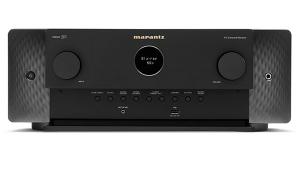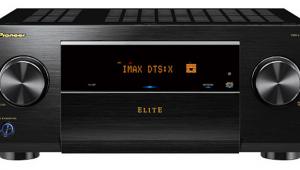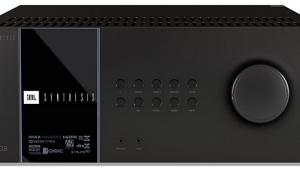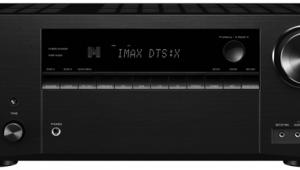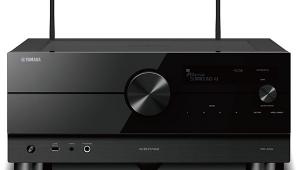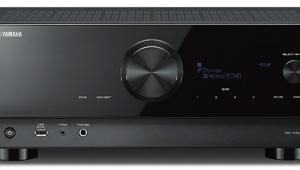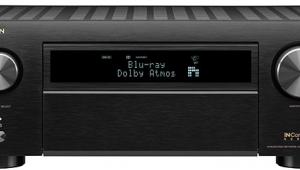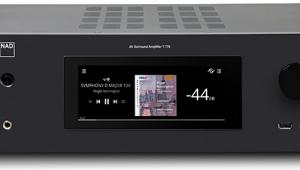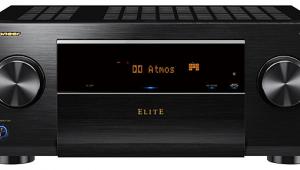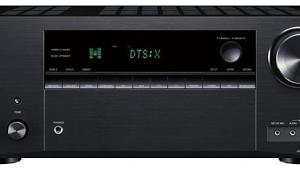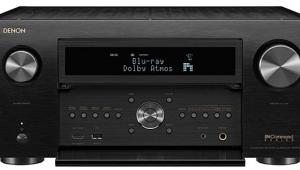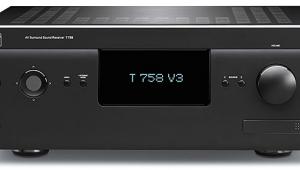Harman/Kardon AVR 3700 AV Receiver
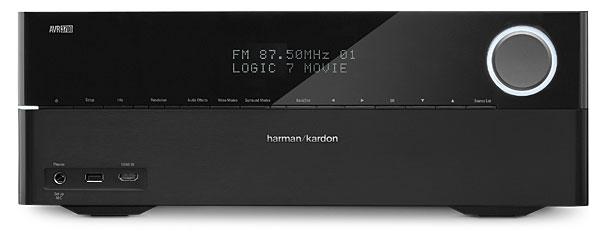
AT A GLANCE
Plus
Powerful yet lightweight
Fast, HD onscreen menus
Built-in Wi-Fi
Minus
Limited audio streaming formats
Unfriendly DLNA streaming navigation
Surround-mode selection a bit clunky
THE VERDICT
A highly competitive audio and video performer in the kilobuck range, H/K’s AVR 3700 should do any home theater justice.
Harman/Kardon is among the quartet of major brands of American audio launched following World War II. (McIntosh, Marantz, and Sherwood are the others.) It’s further distinguished as the only one continuously retained by its owners as a U.S. company—though H/K today is just one brand of the sprawling Harman International empire. (History sidebar: During the Carter presidency, H/K was sold to Beatrice Foods while founder Sidney Harman served as Carter’s Under Secretary of Commerce; Harman then reacquired the company.) What’s more, you can argue that H/K’s latest receivers, exemplified by the new AVR 3700, are the only receivers to retain a visual link (however tenuous) to their forebearers: The AVR 3700’s full-width, black-glass, two-panel over/under design clearly recalls that of H/K’s iconic 330c stereo receiver from the 1970s, at least to my eyes.
Either way, it’s a dramatic and distinctive look, and one I like a great deal—different, but not too different. Otherwise, not counting one distinguishing feature we shall come to, on paper the AVR 3700 doesn’t diverge greatly from the mold of its dozen or so competitors: You get a generous eight-count of HDMI 1.4a inputs and two outputs, extensive surround decoding and processing modes (including Harman’s proprietary Logic 7, which originated at sister brand Lexicon), 4K video passthrough and scaling, audio streaming via DLNA or Apple AirPlay (with Wi-Fi hardware right on board), and full high-definition onscreen graphics for both setup and daily use.
That one distinguishing feature? According to H/K’s product literature, the AVR 3700 employs a “custom-designed digital power supply”—presumably, a switching-mode supply, which isn’t truly digital. This saves substantial weight (and copper costs) and dramatically enhances electrical efficiency. Nowhere does the literature make explicit whether the receiver’s actual post-power-supply power-amp topology is conventional Class AB or Class D, though I suspect the latter, given the AVR 3700’s flyweight nature. Whatever the case, the receiver is impressively light, tipping the scales at only 17.6 pounds, not much more than a third of what some 125-watt AVRs have weighed. Hoisting this bantam into place atop my rack of doom was a pleasure, not a hazard.
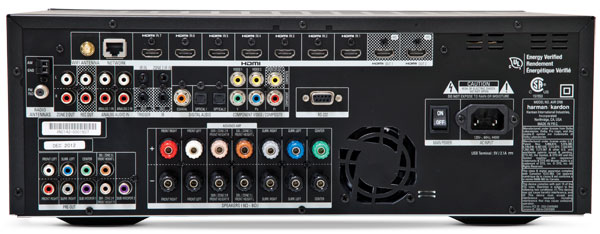
Setup
Setting up the AVR 3700 was mostly pleasant, too. Hookups today are, of course, primarily just HDMI cables and speaker wires; these plugged in without incident. The receiver’s legacy connections consist of a single component video input (and no output) and two composites with a monitor-out; no S-video, which is fine with me. (Honestly, how many laserdisc players and S-VHS decks are still in active service worldwide?) Nor is there a multichannel analog audio input—an omission that increasingly makes sense as HDMI becomes the universal multichannel standard and as legacy multichannel sources die out. (However, the receiver doesn’t decode DSD, which leaves me and the few other SACD fans no option other than in-player multi-channel PCM. Boo.) The AVR 3700 found and joined my Wi-Fi network without issue (I usually employ wired Ethernet) and responded with quite decent speed. Occasionally I did experience interruptions of a second or two when streaming audio via wireless, but I could blame my wireless router as easily as I could the receiver.
The principal remaining installation chore was to run the receiver’s auto-setup software, which in this case is Harman’s proprietary EzSet/EQ. After I plugged in the supplied calibration mike, this ran without incident, cycling noise bursts for about four minutes to adjust my 7.1 channels, which included a pair of height speakers in the front. The results were generally spot-on, except that for some unknown reason the receiver declined to notice my SVS Ultra-12 Plus subwoofer, even though this was perfectly audible (and in fact a few decibels hot) on its channel-canvassing test runs through the channels. Activating it and adjusting the level in the Manual Setup menu was the easy remedy.
 The AVR 3700 doesn’t offer any numeric or graphical result for the EzSet/EQ’s speaker/room equalization, and doing A/B comparisons by ear was tricky due to a rather lengthy muting interval between enable and defeat, and a rather substantial volume difference. Taking those caveats into account, I generally heard an effect that wasn’t very different from what I’ve heard from numerous Audyssey MultEQ–equipped receivers in my room: obviously tighter bass (with less emphasis at 80 hertz) and sort of crisper stereo imaging that gave the impression of being more distinct and convincing without sounding at all brighter per se. If anything, the AVR 3700’s impact seemed greater than what I recall of typical MultEQ runs, but this is a purely subjective impression from aural memory (of notorious reputation) and, therefore, entirely unscientific. For this reason among many others, I did all my evaluative listening, as always, with the EQ disengaged.
The AVR 3700 doesn’t offer any numeric or graphical result for the EzSet/EQ’s speaker/room equalization, and doing A/B comparisons by ear was tricky due to a rather lengthy muting interval between enable and defeat, and a rather substantial volume difference. Taking those caveats into account, I generally heard an effect that wasn’t very different from what I’ve heard from numerous Audyssey MultEQ–equipped receivers in my room: obviously tighter bass (with less emphasis at 80 hertz) and sort of crisper stereo imaging that gave the impression of being more distinct and convincing without sounding at all brighter per se. If anything, the AVR 3700’s impact seemed greater than what I recall of typical MultEQ runs, but this is a purely subjective impression from aural memory (of notorious reputation) and, therefore, entirely unscientific. For this reason among many others, I did all my evaluative listening, as always, with the EQ disengaged.
Music, Movies, and More
The primary job of any receiver is amplification. Beginning as usual with simple, full-range two-channel listening, I found the AVR 3700 to be competent and more. On clean pop like “Cryin’ Shame” from the self-titled release by Lyle Lovett and His Large Band, it produced significant volume and well-defined transients with a transparent impact I usually associate more with separates than receivers. I confirmed this receiver’s intrinsic quality by playing high-resolution DSD recordings from my iMac (via an outboard USB DAC). A track like the Vivaldi aria “Che giova il sospirar” (a free download from 2L Records) displayed the striking air and extraordinarily natural vocal and string timbres I’ve noted many times before—impressive from a midprice receiver. I was very pleased to renew my acquaintance with Harman’s Logic 7 Music mode (there are also Logic 7 Movie and Game modes). This is a winner, which I actually prefer to Dolby Pro Logic IIx/Music for many recordings, because of its slightly deeper, more convincing front soundstage. Multichannel music mixes like Dire Straits’ Brothers in Arms on SACD (reproduced, as already noted, via in-player multi-PCM) produced the full wow factor, and the AVR 3700 demonstrated plenty of power to rock my 2,800-cubic-foot studio, even via my somewhat lower-than-average-sensitivity loudspeaker collection.

